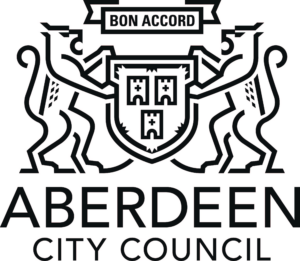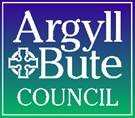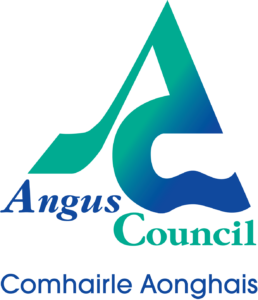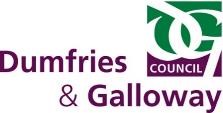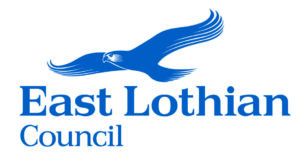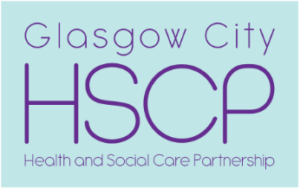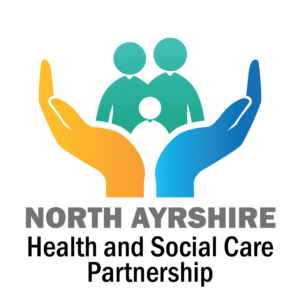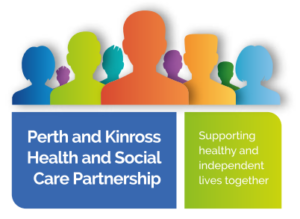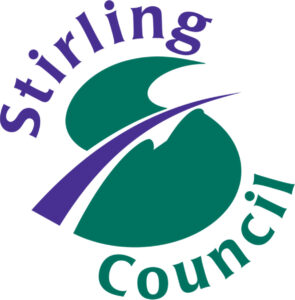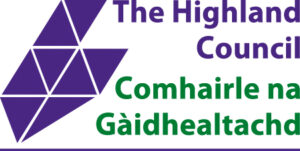Social Work Scotland is the professional body for social work leaders, working closely with our partners to shape policy and practice, and improve the quality and experience of social services. We welcome this opportunity to comment on the Disabled Children and Young People Bill (‘the Bill’), which is intended to improve the outcomes for children and young people with a disability in the transition to adulthood. Social Work Scotland also welcomes the attention brought to the experience of many young people with disabilities and their families in transitions, particularly the phase approaching and following school leaving age.
Do you agree with the overall aims of the Bill? If so, do you think the Bill can meet these aims?
We agree with the aims of the Bill, and are supportive of some of its components. However, we are concerned that:
- the Bill as drafted, if passed and implemented, would not realise its aims;
- it could be counter-productive; and
- to be effective it would require much greater sustained investment than is envisaged.
Social Work Scotland have commented previously on components of the draft Bill. The profiling of potential strategic and practice improvements in this area is welcome. Indeed, the COVID-19 pandemic has accentuated some of the difficulties in transition planning for disabled young people, reinforcing the need for investment and reform, with a view to making rights-based support through transitions the experience of all. As the consultation report emphasises, the motivation for such improvement is broad based and strongly held among from those with lived experience, the practitioners working with them, and the agencies representing their interests.
Is changing the law the only way to do what the Bill is trying to do? Would the Bill (as it is currently written) have any unexpected or unforeseen effects?
As noted in our consultation response of January 2020 ( Disabled Children and Young People(Transitions)(Scotland)Bill – Social Work Scotland) and for the reasons summarised below we are concerned that changing the law (through this Bill) may not be optimal. For example:
- Transitional support should be proportionate to need. Needs unfold from an interaction of factors which may or may not include disability; or may include disability to an extent that is not covered by the terms of this Bill.
- The statutory guidance to the Education (Additional Support for Learning) (Scotland) Act 2004, as amended, provides for a range of expectations in relation to content, co-ordination and timing of transitions planning, not only around school leaving age, and not only around disability. Attention to its proper implementation (and the resources that will require) may be a better route to achieving some of the Bill’s aims.
- The way that existing requirements (such as transitions planning and co-ordinated support planning) fit together could benefit from clarification and affirmation, as indicated in Recommendation 8.2 of the recent Review of Implementation of the Additional Support for Learning Act ( Angela Morgan/ Scottish Government June 2020). Making such changes would potentially deliver some of the improvements sought by this bill.
We also remain concerned and cautious about:
- Imposing a standard legislative requirement for a statutory transitions plan.
- Adding another layer of legislation with overlapping purposes with other legal measures
- The definition of disabled children encompassed, and eligibility for a plan, that may lead to a reduction or absence of support for those who have not be assessed or diagnosed in a way that fits the definition; and yet whom may require more planning and support than some that do.
- Adding another layer to the complexity of integrated joint planning obligations. A flexible approach supported by national guidance, clarifying and connecting existing legislative requirements might offer an alternative. This could be supplemented by clear indicators and examples of effective practice during key transitional phases (not only before/during/after leaving secondary school). Guidance on Children’s Services Plans (Scottish Government 2020, para 174) emphasises the need for service and strategic plans for transitions.
- The assumption underpinning this Bill, that improvement will follow from legislative change. Arguably our legislative environment is both comprehensive and flexible enough already to meet the Bill’s objectives. The issues which must be addressed are around resources (including workforce numbers) and implementation fidelity (of existing legislation and recent review recommendations).
- The risk this Bill creates that a transitions plan could end up being a handover episode rather than an evolving and co-ordinated and collaborative process involving people and organisations most relevant to the young person/ young adult, whose views as well as needs should be central.
- Raising of expectations from the legislation that are not resourced. Improving the development of transitions plans will require added time and, in some situations, training and supervisory time primarily within education and social work. Improvements in transitional support will depend on sufficiently early and continuous access to support and services, co-ordinated as necessary in each evolving situation and preferably co-ordinated through a single point of contact. There are therefore considerable resource implications in the bridging of this gap.
- Some of the specific current gaps are well illustrated in the consultation report. For example, employment, work experience and further education opportunities suited for young disabled children can be very hard to access; and there are a number of children with life limiting conditions who are now, thanks to medical advances, living longer. Many require sustained co-ordinated support and review of ‘transition’ planning. These are among the costs of real improvement that are not weighed up within the financial memorandum.
- The requirement that all disabled children have a statutory transitions plan conveys a sense that a plan is being imposed. There may be situations in which the development of a statutory plan co-ordinated by professionals is not required or wanted by young people and their families.
- If a blanket statutory plan is so imposed there are potentially complex information sharing issues between parties to the plan that would have to be addressed in general principle and in each case.
- What is the position of those who have left school without a transitions plan, who are under 18 years old? Would they have to be tracked down and a statutory plan formed for them? Their views and experience should clearly be formative in terms of what happens and how it happens.
- There may be other plans relating to their capacity or need for support as adults or in relation to their protection that would require some careful co-ordination in terms of intersecting purpose. Otherwise, a range of persons could potentially be involved for each in ways that could prove confusing. A streamlined and person-centred approach would be the aspiration for any young person at the centre of a transitions plan.
Current efforts at improvement that should influence decisions about legislation
Taking in to account the need for collaborative solutions for a complex range of systemic and practice issues, we would again draw attention to the work of The Scottish Transitions Forum and ARC Scotland’s The Principles of Good Transitions 3 This provides a framework, including the seven ‘Principles of Good Transitions’ which informs, structures and encourages the continual improvement of support for young people with a wide range of additional needs between the ages of 14 and 25 who are making the transition to young adult life. Principles into Practice, is a co-produced draft framework which is now (from December 2020) being piloted with the support of Scottish Government. It provides practical guidance and evaluation measures to help pilot local authorities and health and social care partnerships embed the seven ‘Principles of Good Transitions’ into policy, planning and practice. Wider implementation of the final framework is then envisaged across Scotland.
We would also draw attention to the Social Work Scotland Self-Directed Support Project. Learning about the implementation of self-directed support in transitional phases is very relevant, and will be crystallised in a set of standards. The SDS Project Team has consulted widely and taken in to account a range of additional evidence relevant to transitions including:
- The Audit Scotland (2020) Self-Directed Support Progress report ;
- SDS Scotland (2020) My Support My Choice: People’s Experiences of Self-Directed Support and Care in Scotland
- The Promise – report of the Independent Care Review (2020)
The Self-Directed Support Project Team are currently finalising a series of draft self-directed support standards which take a Human Rights, strengths and assets based approach across children, families, young people, adults and carers services. Sitting behind the standards are a series of action statements, outlining what local authorities and their partners need to do to achieve each standard, with the aim of closing the implementation gap across Scotland.
In general, the self-directed support standards aim to create and facilitate consistency of practice, around good quality person centred assessment, support planning and review processes, with minimum bureaucracy, and a greater focus on relationship based, personal outcomes focused practice which takes a strengths and assets based approach.
The Self-Directed Support standards also recognise the importance of early help, independent advice, advocacy and support for everyone at all stages in their lives, and this is particularly relevant for young people at point of transition. The standards also observe the importance of accountability, and how people can challenge decisions, seek redress about decisions around their support and how accountability is built into all policies, procedures and practice.
The Self-Directed Support Project Team have worked closely with The Scottish Transitions Forum and ARC Scotland, a self-directed support standard has been developed explicitly about transition planning. This standard emphasises that transition planning processes must have the person’s wellbeing, aspirations and personal outcomes at the centre; and that young people and their families need to be given the time, information and help they need to make choices and have control of their care and support as they move into the next phase of their lives.
Furthermore, the Self-Directed Support Project Team are calling for the Principles of Good Transitions to be embedded within all self-directed support policy, planning and practice across all sectors as a framework to support young people and families.
However, the Self-Directed Support Project Team recognise that in order to do this, practitioners must be supported to have the skills, knowledge, confidence, permission and time required, and be trusted to support people to live the life they want to lead. Furthermore the self-directed support standards identify that clear guidance must be established to address the balance between innovation, choice and risk with young people and their carers, to best support them at the point of transition, and to achieve their agreed outcomes creatively.
There are other ways in which support for good transitions might be progressed as indicated in our previous response. However, in short, the Bill is not the only possible way to make progress, and may not be the most effective. There is much to be learned from efforts underway to develop mechanisms that are sufficiently collaborative, inclusive, flexible, early and co-ordinated. There are ways that existing joint planning obligations (and perhaps inspection parameters) could be better joined up around transitions. At Social Work Scotland we have a macro concern, relevant to all domains of public policy, that justifiable frustrations at the pace of improvement lead to the ‘layering in’ of new legislation, rather than careful, systematic work to address the factors which determine the slow rate of change. While its aims are legitimate, we feel this legislation falls into this category.
The Bill would require the Scottish Government to introduce a National Transitions Strategy (sections 1 to 6 of the Bill). Do you agree with introducing a strategy, and a Scottish minister to be in charge of it?
While we have some concern about a proliferation of strategies (each of which quickly becomes a disconnected silo) we would support the development of a strategy that sets out to do the opposite, and acts as a bridge between areas of distinct but interrelated responsibility. The components set out in s1 of the Bill make sense and would offer the opportunity for clarity in terms of shared expectations and outcomes across services with shared responsibilities. In some but not all situations where there is significant health service involvement with disabled children, there is a need for integrated co-ordination of complex transfers of health responsibilities. And sometimes there is a need for co-ordinated health and social transitions when young people may not be categorised as disabled. The health dimension is not so obviously integrated within the Bill’s intentions but it should be encompassed within strategic improvement initiatives.
In a similar vein, we have some concern about the potential for ‘transitions for disabled children’ to become a ministerial silo, should there be such an appointment. A perception may develop that it is the specific ministers responsibility, and that they have the authority, to deliver improvement, when the reality is that changes will have be made within other ministerial portfolios. Support for good transitions has relevance across a range of policy areas, and the absence of support for good transitions will have an adverse impact on a range of individual and community needs and national outcomes. However, having someone with a designated national leadership role could ensure that the need for effective bridging is both understood and realised.
The Bill places a duty on local councils to prepare and implement transition plans for each disabled child and young person within their local authority area (sections 7 to 13 of the Bill). They would also have to explain: how plans were going to be prepared and managed what would happen if there was a disagreement about what was in a plan or how it was working. Do you agree with these proposals?
Our concern about blanket plans for all disabled children (as defined in the Bill) are expressed above. If they are so ordered then we agree that local authorities would have to explain how they will be prepared and managed, and what will happen in resolution of disputes. Disputes are more likely to arise if unrealistic expectations are raised within plans that are a procedurally driven, rather than co-produced. Again, we would recommend learning from the consultation work ongoing around ‘Transitions: Principles into Practice’ as a preliminary step.
What financial impact do you think the Bill may have, either on the Scottish Government, local councils, or other bodies?
As indicated below we have not conducted a detailed analysis of the potential costs but we do have significant concerns about the Financial Memorandum. For example, the data used to estimate the numbers of plans needed for school leavers appears quite dated, and relates only to those known to be disabled when leaving school.
There are implications for new work, new training and new supervision for education staff; and for local authority social work staff involved in applying new legislation. All such change has a material cost. This is at a time of extraordinary additional pressure and financial cuts. It is difficult to understand how estimates of average cost per authority have been reached.
Assumptions about savings (a single and extreme example is given) are not realistic or evidenced. Optimistically, long term savings could be achieved by supporting individuals effectively and in particular by reaching out to those with whom services find it most difficult to engage; and who find engagement with supports most difficult. In the short and medium term, listening, co-ordinating, planning together, procuring, supplying, reviewing etc. – are all processes that do not come free.
Cumulatively, there is a tendency for expectations of local authority social work to be layered. New layers are settling thick and fast at present. Local authority social work does not hold all the answers to improved transitional support. It does play a significant part, particularly in the most complex situations. It is necessary to be realistic to achieve the outcomes required by this initiative.
Is there anything else you’d like the Committee to know about the Bill? Do you have any comments on how the Bill will affect (for better or worse) the rights and quality of life of the people covered by the Bill?
We would also draw attention to the extraordinary intensity of complex national consultation requests and calls for evidence in the past year about legislation, policy, guidance and practice. This has occurred during the course of a pandemic which has created unprecedented demands on social work leaders, managers and practitioners at all levels. The implications for social work and partner services within this Bill are considerable. The capacity to debate the calculations about costs and impact apparent in the financial memorandum have been severely constrained by this interaction of stresses and by the timing of this call for views just after new year.
We now appreciate that there is a separate Call for views by Scottish Parliament Finance and Constitution Committee on the financial impact of the Bill. This also due on 11th January and as this was not originally linked we have not consulted or attempted analysis on this and respectfully submit that it is not immediately possible to convey more than significant general concern about the Financial assumptions currently in the Memorandum.

